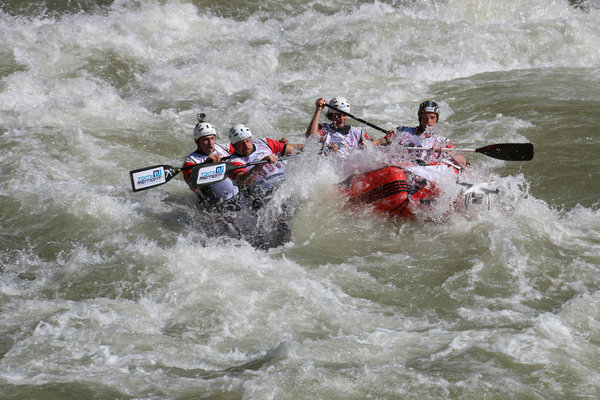Batang river makes waves
 |
|
Rafters compete in the Batang River at the Yushu World Cup rafting.[Photo by Yang Feiyue/ China Daily] |
The Yushu Tibetan autonomous prefecture found favor with the International Rafting Federation president, Joe Willie, during his visit in April. He was impressed by the river and the high-altitude environment.
"The water volume, flow velocity and vertical drop of the river provide a technically challenging course for the competition," he says, adding that it might be the highest such course in the world.
Contestants from 10 countries, including China, Britain, New Zealand, the Czech Republic and Costa Rica, were in close combat.
The three-day event was the second leg of the three-stop 2016 World Cup series and open to male and female rafters from around the world.
Rafters took part in the sprint, H2H (head-to-head), the slalom, and downriver, the four disciplines in rafting.
Meanwhile, the local government is striving to draw visitors with its natural resources after a magnitude 7.1 earthquake rocked Yushu city in April 2010, claiming the lives of more than 2,000 people.
The city sits 4,000 meters above sea level and is the birthplace of the Yangtze, the Yellow and the Lancang rivers, which makes it a good destination for rafting events.
Rafters first came to the area more than 30 years ago.
In 1985, Yao Maoshu, a photographer from a university in Southwest China's Sichuan province, came to Yushu and rafted from the source of the Yangtze.
He took the plunge when he heard that American rafter Ken Warren was trying to do the same and became the first rafter to traverse the Yangtze.
Yao rafted roughly 1,200 kilometers but tragically drowned in rapids in Jinsha River in July that year.
Many followed in his wake, and some lost their lives as well.
In 1986, a group of 46 spent roughly six months rafting from the source of the Yangtze to Shanghai where it meets the East China Sea.
Yushu started to develop rafting about three years ago.
Then, the local government sent personnel to study and understand the sport, says Suonan Zhande, the deputy head of the Yushu culture, sports and tourism authority.
"We've also invited experienced rafters to look at our river and pick out routes that are fit for rafting," says Zhande.
















